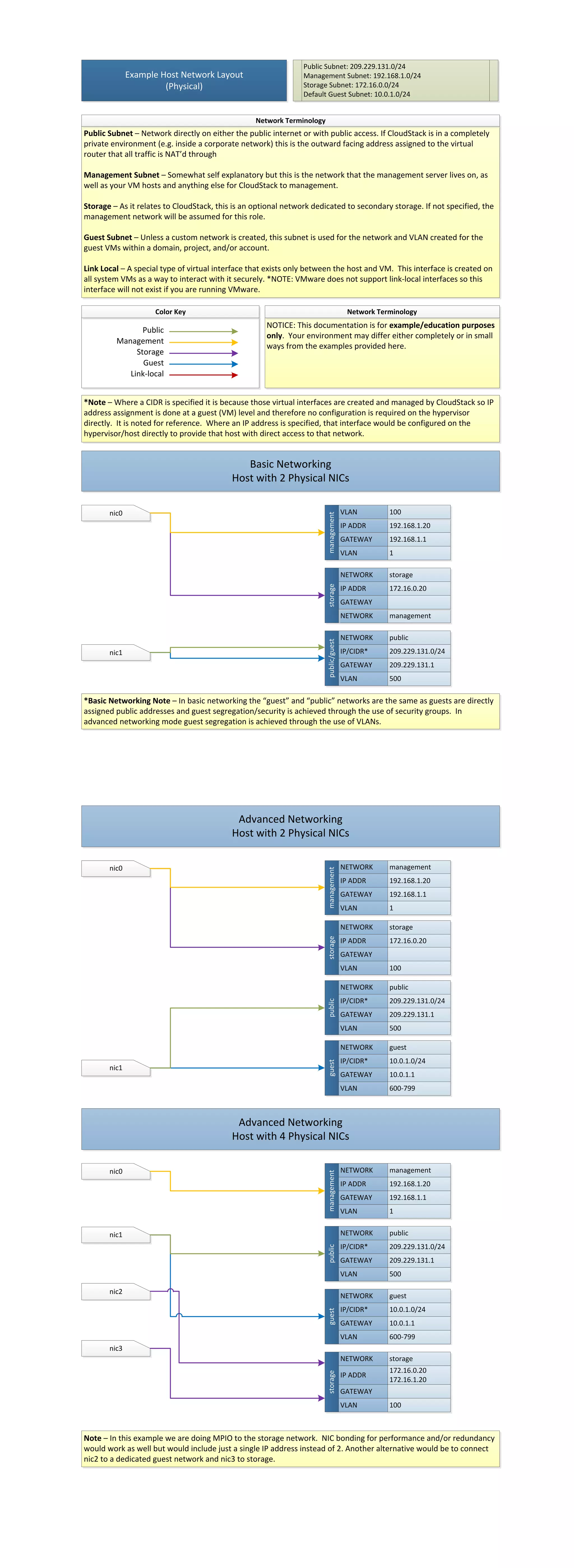The document describes the different network types in a CloudStack environment: - The public subnet is for external internet access and traffic is NAT'd through the virtual router. - The management subnet contains the management server and hypervisor hosts for CloudStack management. - The storage subnet is optional and dedicated to secondary storage, otherwise the management subnet is used. - The guest subnet is used for guest VMs by default, but custom networks can be created. - Link local is a virtual interface between host and VM for secure interaction, but not supported on VMware.
